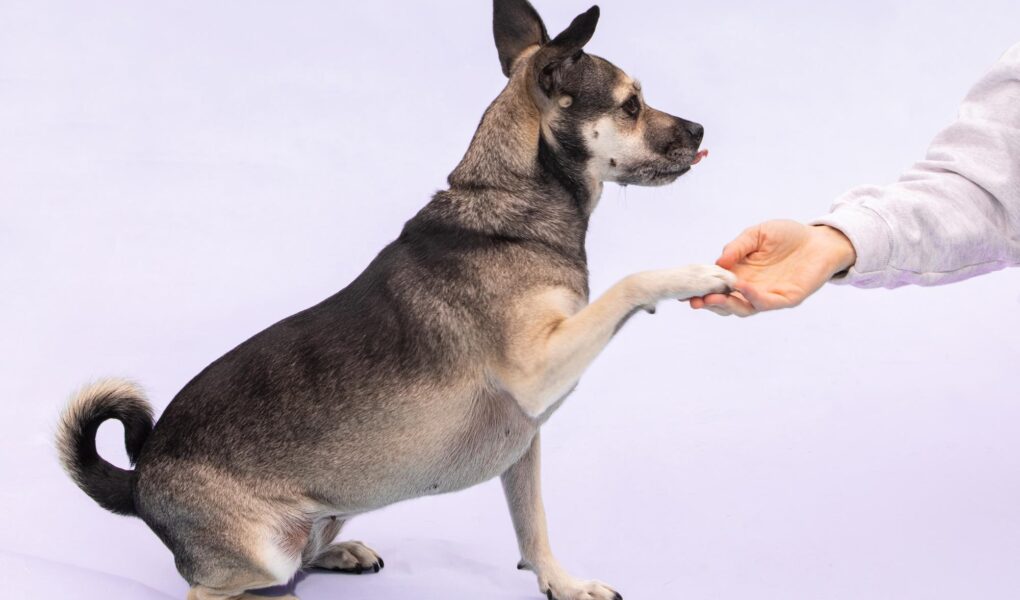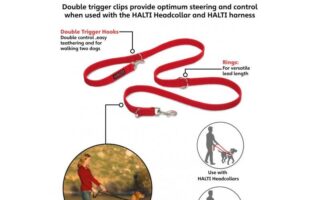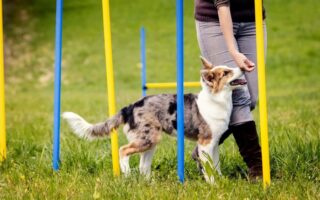Introduction: Understanding the Journey of Training Aggressive Dogs
In a world where the bond between humans and their canine companions often embodies unconditional love and loyalty, the reality is that some dogs carry the weight of past traumas or genetic predispositions that manifest as aggression. For pet owners, the experience of managing an aggressive dog can feel overwhelming, casting shadows on the joy of dog ownership. Yet, within this challenge lies an opportunity for transformation. Dog training for aggressive dogs is not just about curbing undesirable behaviors; it is a pathway to understanding, communication, and ultimately, rehabilitation. This article delves into the intricate dynamics of aggression in dogs, exploring the underlying causes, the importance of early intervention, and effective training techniques that can pave the way for a safer and more harmonious relationship between dogs and their handlers. Whether you are a seasoned trainer or a concerned pet owner, join us as we navigate the complex landscape of aggression, guided by insights and strategies designed to foster trust and tranquility.
Table of Contents
- Understanding the Roots of Aggression in Dogs
- Effective Techniques for De-escalating Aggressive Behavior
- Building Positive Reinforcement Strategies for Lasting Change
- The Role of Professional Help in Managing Aggression
- Q&A
- Insights and Conclusions
Understanding the Roots of Aggression in Dogs
To effectively address aggression in dogs, we must first delve into the various factors that contribute to this behavior. Understanding the roots can help pet owners craft a tailored approach to training. Some prominent causes include:
- Genetics: Certain breeds may possess a predisposition towards aggressive tendencies.
- Socialization: Lack of exposure to different people, pets, and environments can lead to fear-based aggression.
- Past Experiences: Traumatic events or negative interactions can trigger defensive behavior.
- Health Issues: Pain or illness can manifest as aggression, making veterinary consultation essential.
Identifying the underlying causes is only the first step. Once the roots of aggression are understood, implementing a comprehensive training strategy becomes crucial. Key components include:
| Training Method | Description |
|---|---|
| Positive Reinforcement | Rewarding desired behaviors to encourage their repetition. |
| Desensitization | Gradually exposing the dog to triggers to reduce fear and anxiety. |
| Obedience Training | Teaching commands to foster control and improve communication. |
| Behavior Modification | Using specialized techniques to replace aggressive behavior with positive actions. |
Effective Techniques for De-escalating Aggressive Behavior
Successfully managing aggressive behavior in dogs requires patience and a variety of techniques tailored to the individual dog’s needs. One effective approach is to stay calm and project a sense of control. Your own demeanor can greatly influence how a dog reacts. When facing aggression, use a soft, soothing voice and avoid sudden movements that could escalate tension. It’s essential to allow the dog space to express its feelings while simultaneously ensuring your own safety. Engaging in practices such as redirecting attention can also be beneficial; using toys or treats to distract the dog from the source of aggression can make a significant difference. Remember that positive reinforcement for calm behavior is crucial, as this encourages the dog to associate non-aggressive behavior with rewards.
Another technique involves employing the “stay” command to help the dog learn self-control and accountability. Utilizing short, repeated training sessions can reinforce this skill effectively. You can also establish a safe zone in your home where the dog can retreat if feeling overwhelmed. Incorporating the following strategies into your training regimen can further enhance your approach:
| Technique | Description |
|---|---|
| Desensitization | Gradually exposing the dog to aggressive triggers in a controlled environment. |
| Counter-conditioning | Changing the dog’s emotional response to triggers through positive associations. |
| Controlled exposure | Supervised interactions with calm, friendly dogs to promote positive socialization. |
| Breathing exercises | Practicing deep breathing to help calm both you and the dog during tense moments. |
Building Positive Reinforcement Strategies for Lasting Change
Implementing positive reinforcement strategies is essential when working with aggressive dogs, as it fosters trust and encourages desirable behavior. By focusing on rewarding good behaviors instead of punishing negative ones, you can create a more harmonious dynamic between you and your dog. Consider the following techniques:
- Use High-Value Treats: Opt for treats that your dog finds particularly rewarding to motivate them.
- Timing is Key: Ensure that rewards are given immediately following desired behavior to reinforce the connection.
- Practice Patience: Allow your dog time to process and learn; gradual progress often yields the best results.
- Consistency Matters: Establish clear and consistent commands to reduce confusion and help your dog understand expectations.
In addition to these techniques, creating structured training sessions will further enhance your dog’s learning experience. Keeping sessions short and engaging helps maintain focus and enthusiasm. Tracking your dog’s progress can also provide insights into which strategies are most effective. The following table illustrates a sample training plan:
| Day | Focus Area | Duration | Rewards |
|---|---|---|---|
| 1 | Basic Commands | 15 min | High-Value Treats |
| 2 | Socialization | 20 min | Praise & Playtime |
| 3 | Impulse Control | 15 min | Toys & Treats |
By focusing on these foundational aspects of training through positive reinforcement, you allow the potential for lasting change in your dog’s behavior while strengthening your bond.
The Role of Professional Help in Managing Aggression
When dealing with aggression in dogs, seeking professional help can be a game-changer. Behavioral experts possess the knowledge and experience to assess the underlying causes of aggressive behavior, which can stem from a variety of sources, such as fear, territorial instincts, or insufficient socialization. Interventions can be tailored to tackle specific issues, ensuring that the training is effective and addressing the root problems rather than merely the symptoms. Common strategies employed by professionals include:
- Behavior modification techniques that promote positive associations.
- Socialization exercises in controlled environments.
- Customized training plans to reinforce desired behaviors.
In many cases, trainers will also educate pet owners on effective handling and communication with their dogs. This knowledge transfer is critical, as owners play an essential role in their dog’s ongoing development. Understanding the significance of consistency and patience becomes vital, as it helps to foster a more harmonious relationship. Below is a simple table highlighting key areas where professional help can assist:
| Area of Focus | Professional Assistance |
|---|---|
| Understanding Triggers | In-depth assessments and insights |
| Training Techniques | Access to advanced methods and tools |
| Behavior Monitoring | Regular check-ins and adjustments |
Q&A
Q&A: Understanding Dog Training for Aggressive Dogs
Q1: What is considered aggressive behavior in dogs?
A1: Aggressive behavior in dogs can manifest in various ways, ranging from growling, barking, and lunging to more severe actions like biting. Aggression is often a response to fear, territorial instincts, or protective behaviors, and it can be directed towards people, other dogs, or objects.
Q2: Why might a dog exhibit aggressive behavior?
A2: Several factors can contribute to a dog’s aggression, including genetics, past experiences, socialization (or lack thereof), and health issues. A dog that feels threatened or anxious may resort to aggressive behavior as a defense mechanism.
Q3: Can aggressive behavior be trained away?
A3: Yes, aggressive behavior can be managed and reduced through effective training methods. However, it requires time, consistency, and patience, and sometimes professional guidance from a certified dog trainer or behaviorist is necessary to ensure safety and effectiveness.
Q4: What are some common training techniques for aggressive dogs?
A4: Common techniques include desensitization and counter-conditioning, positive reinforcement, creating a structured environment, and using commands to redirect attention. Establishing clear boundaries and consistent routines also helps reinforce positive behavior.
Q5: How should a dog owner approach training an aggressive dog?
A5: A dog owner should approach training with a calm and assertive demeanor. It’s essential to remain patient and empathetic, understanding that aggression often stems from fear or anxiety. Begin training in a controlled environment with minimal distractions and gradually expose the dog to more challenging situations as it progresses.
Q6: Are there certain breeds more prone to aggression?
A6: While any breed can exhibit aggressive behavior, certain breeds may have characteristics that predispose them to it, particularly if not socialized properly. It is important to remember, however, that behavior is largely influenced by the individual dog’s upbringing, training, and environment rather than breed alone.
Q7: When should a dog owner seek professional help?
A7: Professional help is advisable if a dog displays severe aggressive behavior that endangers others or itself. Additionally, if training efforts seem ineffective or if the owner feels overwhelmed, enlisting the support of a qualified trainer or behaviorist can provide valuable insights and strategies.
Q8: Can medication play a role in training aggressive dogs?
A8: In some cases, medication prescribed by a veterinarian can help reduce anxiety or fear, making a dog more receptive to training. It’s essential to consider medication as part of a comprehensive training plan rather than a standalone solution.
Q9: What are some signs that training is working?
A9: Signs of progress include a decrease in aggressive incidents, improved responses to commands, and the ability to manage triggers without displaying aggression. A more relaxed demeanor around previously anxiety-inducing situations is also a positive indication.
Q10: How can I maintain positive behavior in my dog after training?
A10: Continuing to reinforce positive behavior is crucial. Regular training sessions, socialization opportunities, and ongoing positive reinforcement can help solidify your dog’s learning. Engaging in stimulating activities and establishing a routine will contribute to your dog’s ongoing emotional stability.
Insights and Conclusions
dog training for aggressive dogs is not just about curbing unwanted behaviors; it’s about fostering understanding and building a bridge between human and canine. Every growl, bark, and stubborn stance tells a story waiting to be unraveled. With patience, consistency, and, most importantly, love, owners can transform their anxious companions into well-mannered pals. Remember, aggression often stems from fear or discomfort, and addressing these underlying issues can lead to lasting change. As you embark on this journey, know that every step—no matter how small—brings you closer to the harmonious bond you seek. Your dedication to understanding your dog not only enhances their life but also enriches your own. Together, you can navigate this path towards peace and mutual respect, proving that with the right guidance, even the most troubled souls can find their way home.



